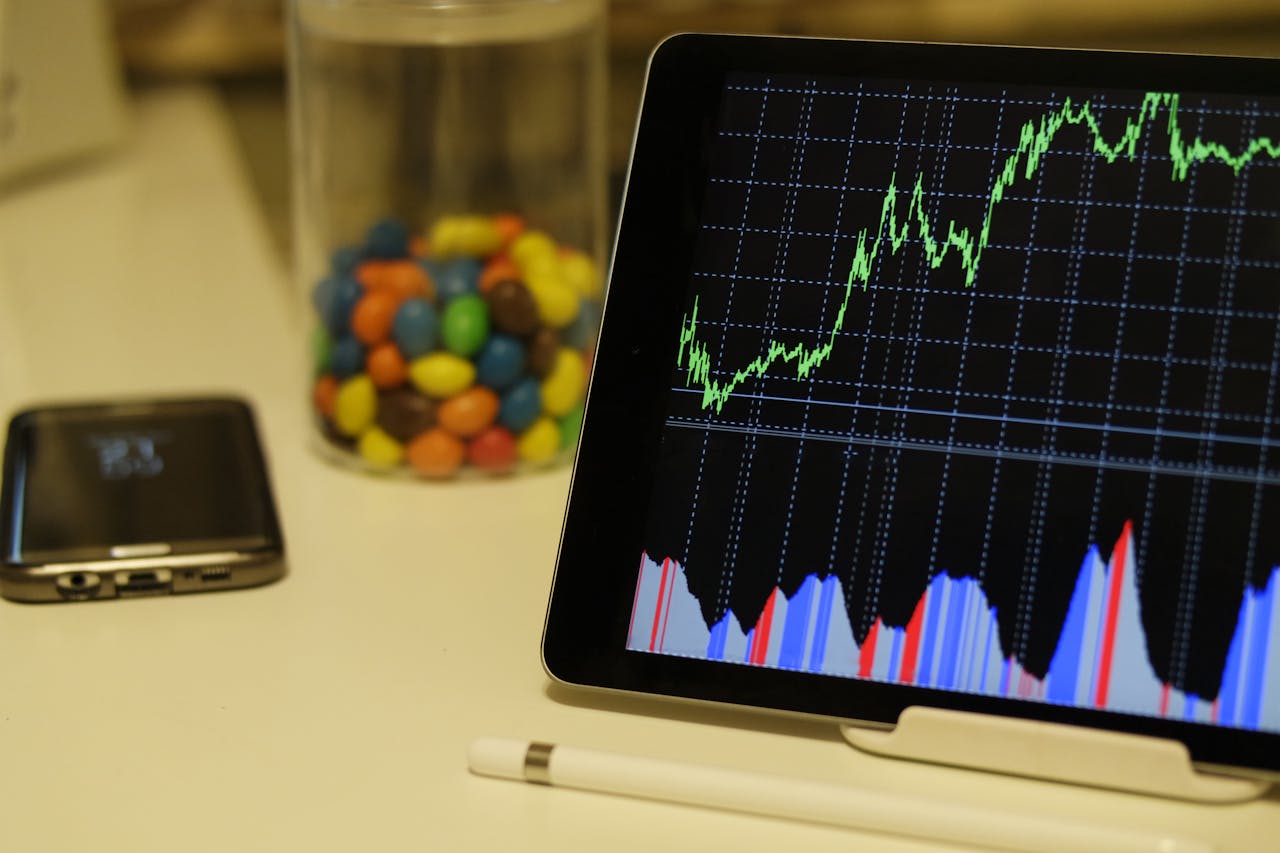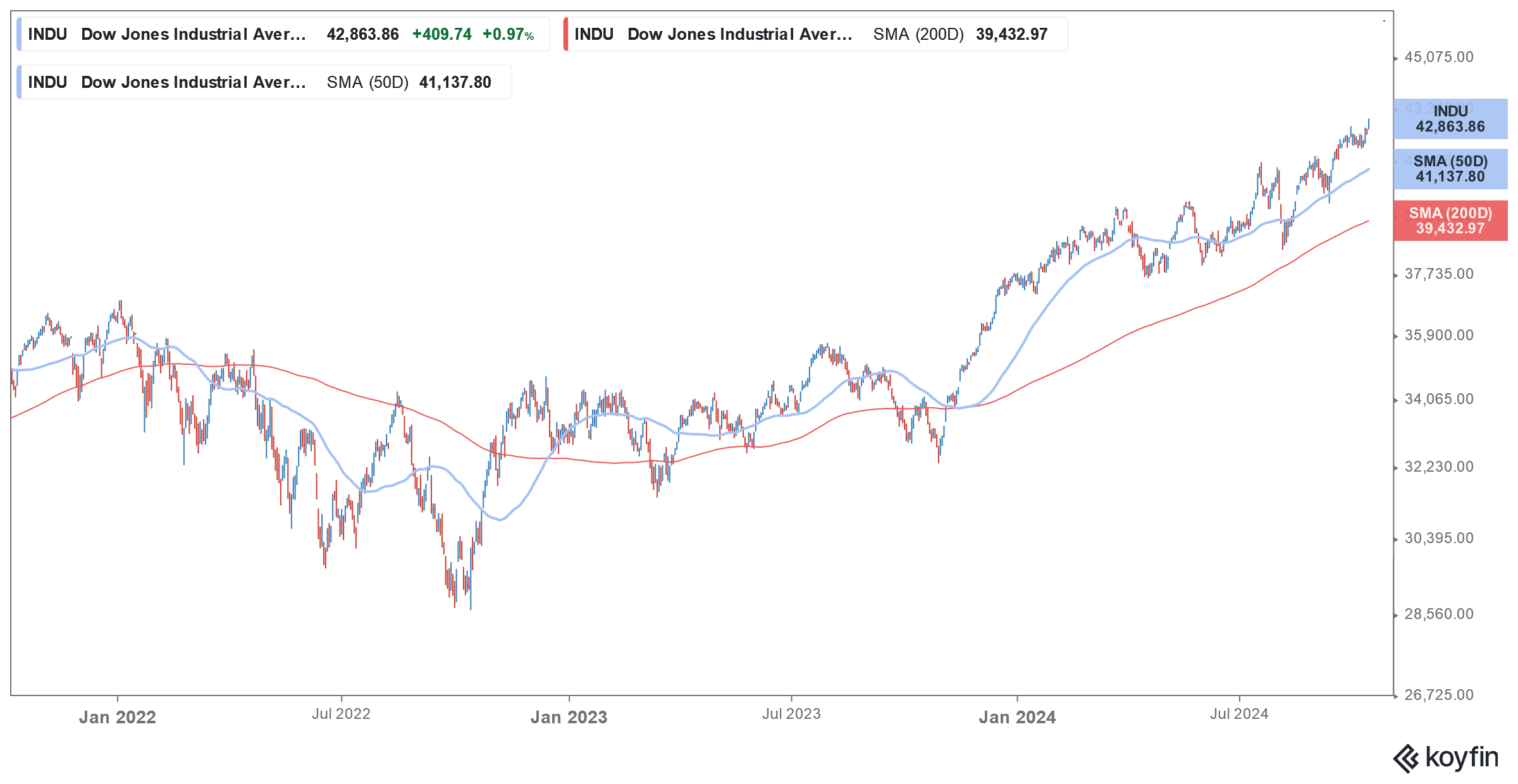
US shares rallied on Friday and both the Dow Jones and S&P 500 Index rose to a record high with the latter closing above 5,800 for the first time. Impressive bank earnings and comforting inflation data helped US markets rally on Friday even as Tesla’s “We, Robot” event played a spoilsport.
Notably, while both the Dow Jones and S&P 500 have been hitting new record highs, the tech-heavy Nasdaq Composite has failed to breach its July high. While the tech sector – which led the first-half rally – has taken a back seat, other sectors of the market have taken over the leadership position.
US shares rise to record highs
Even on Friday, while the Dow Jones added nearly 1% and the S&P 500 rose 0.61%, the Nasdaq Composite was up by just 0.33%. Commenting on the price action, Craig Sterling, head of U.S. equity research at Amundi US said, “What we’re seeing — and I think you’re seeing it hit pretty hard today, in a good way — is a broadening of the market.”
Notably, all these indices added over 1% for the week and US shares have now closed with gains for five consecutive weeks.
Bank shares rose after impressive earnings
The Q3 earnings confessional began on a positive note and both Wells Fargo and JPMorgan Chase reported an impressive set of numbers. Bank earnings are typically a barometer of the broader economy and analysts see strong bank earnings as a sign that the US economy is headed for a soft landing.
Evan Brown, Portfolio Manager and Head of Multi-Asset Strategy at UBS Asset Management said, “We’d some good earnings reports from some leading financial companies. That’s a good start to earnings season.” He added, “When financials do well, this is what a soft landing looks like. It’s a positive overall sign for the economy and sets a positive tone for earnings releases in other industries in the next few weeks.”
Bank shares rose across the board after both Wells Fargo and JPMorgan Chase reported better-than-expected Q3 earnings.
US PPI data was lower than expected
Notably, while the September CPI (consumer price index) rose at an annualized pace of 2.4% in September – which was higher than what analysts were expecting – the PPI (producer price index) was flat on a monthly basis while analysts were expecting it to rise by 0.1%.
Scott Wren, senior global market strategist at Wells Fargo Investment Institute said, “The market’s pretty convinced that we’re going to have a soft landing and that inflation, even with CPI being a little bit higher than expected yesterday, is going to be moderate.”
He added, “If you look at today’s PPI data, the core and final demand were both a little lower than expected … Inflation’s certainly been moderating and that’s a positive that the market paid attention to.”
Goldman Sachs believes the Fed might have achieved its 2% inflation target
Goldman Sachs believes that the September PCE (personal consumption expenditure) data which would be released later this month would show an annualized rise of 2.04%, which if it happens, would mean the Fed would have achieved its goal of bringing down inflation to 2%.
Most traders believe that the Fed would cut rates by 25 basis points each at the November and December meeting. Notably, the US central bank lowered rates by 50 basis points at the September meeting which was the first rate cut since 2020.
While US shares initially fell after the rate cut as markets took the big rate cut as a sign of an impending recession, they eventually recovered.
Fed began raising rates in 2022
The Fed began raising rates in March 2022 to contain rising inflation that it previously said was “transitory.” It raised rates by 25 basis points in March 2022 and by 50 basis points in May. In the next four meetings, it raised rates by 75 basis points each before lowering the pace of hikes to 50 basis points in December.
The US Central Bank raised rates four times in 2023 by 25 basis points each which lifted the Fed fund rates to 5.25%-5.50% – the highest since 2001. Higher interest rates were among the key reasons US shares plummeted in 2022 with tech and growth shares especially bearing the brunt.
Analysts turned bullish on US shares after the Fed rate cut
After the Fed rate cut last month, some analysts turned bullish on US shares. BMO chief investment strategist Brian Belski raised his year-end target for the S&P 500 by 500 points to 6,100, which is the highest among major firms.
Data compiled by Canaccord Genuity shows the S&P 500 index delivers an average gain of 18.6% gain one year after the Fed begins to lower rates – provided we don’t get into a recession.
JPMorgan also echoes similar views and said, “Over the past 40 years, the Fed has cut rates 12 times with the S&P 500 within 1% of an all-time high. The market was higher a year later all 12 times with an average return of around 15%.”
Tesla shares fell on Friday
Meanwhile, despite a broad-based rise in US shares, Tesla was down nearly 9% after the company’s “We, Robot” event, where it revealed its Cybercab, disappointed markets. The company also talked about a bigger vehicle named Cybervan which can accommodate upto 20 people and also showcased its Optimus humanoid at the event.
However, the lack of details on concrete timelines for these futuristic products dampened sentiments and even long-time Tesla bull Adam Jones was disappointed with the hyped event.
Tesla shares are in the red this year and it is the worst-performing constituent of the so-called “Magnificent 7” group that includes other Big Tech companies like Apple and Amazon.


Question & Answers (0)